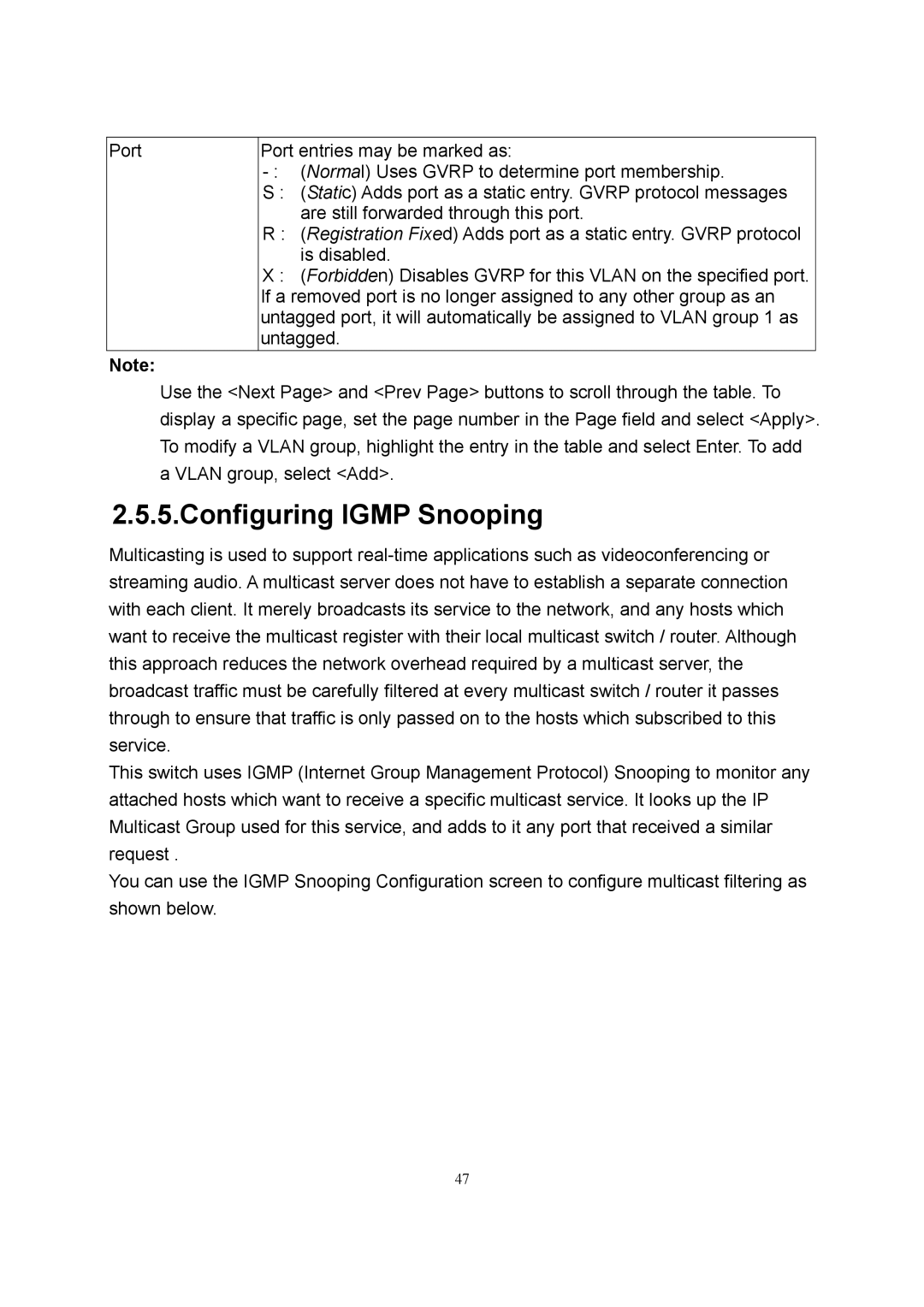
Port
Port entries may be marked as:
S : (Static) Adds port as a static entry. GVRP protocol messages are still forwarded through this port.
R : (Registration Fixed) Adds port as a static entry. GVRP protocol is disabled.
X : (Forbidden) Disables GVRP for this VLAN on the specified port. If a removed port is no longer assigned to any other group as an untagged port, it will automatically be assigned to VLAN group 1 as untagged.
Note:
Use the <Next Page> and <Prev Page> buttons to scroll through the table. To display a specific page, set the page number in the Page field and select <Apply>. To modify a VLAN group, highlight the entry in the table and select Enter. To add a VLAN group, select <Add>.
2.5.5.Configuring IGMP Snooping
Multicasting is used to support
This switch uses IGMP (Internet Group Management Protocol) Snooping to monitor any attached hosts which want to receive a specific multicast service. It looks up the IP Multicast Group used for this service, and adds to it any port that received a similar request .
You can use the IGMP Snooping Configuration screen to configure multicast filtering as shown below.
47
